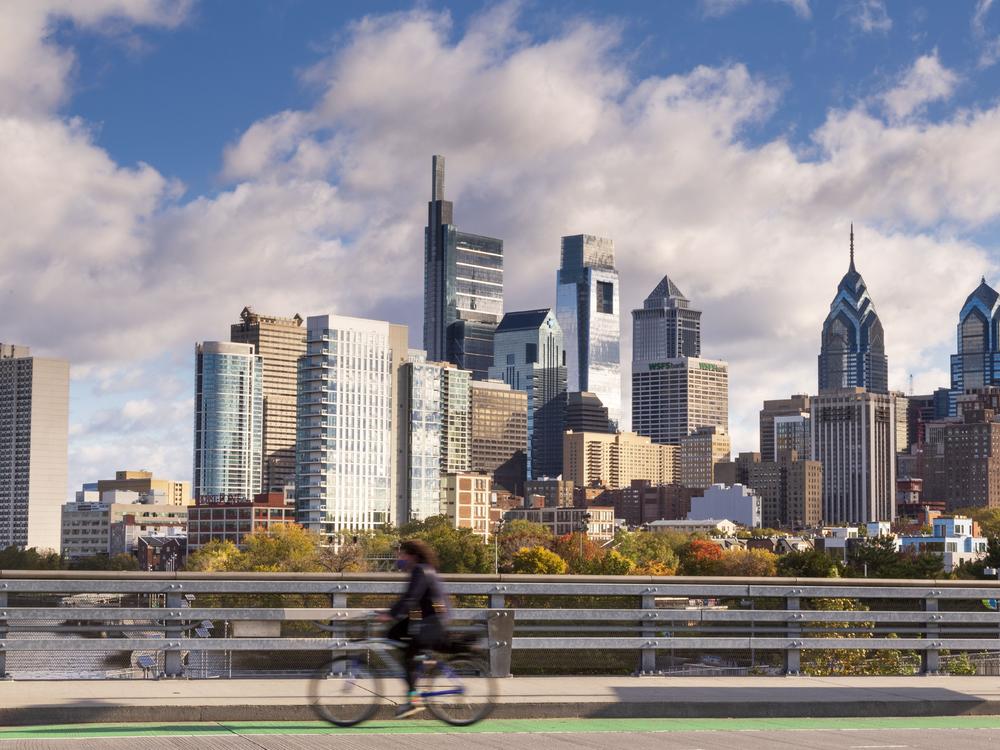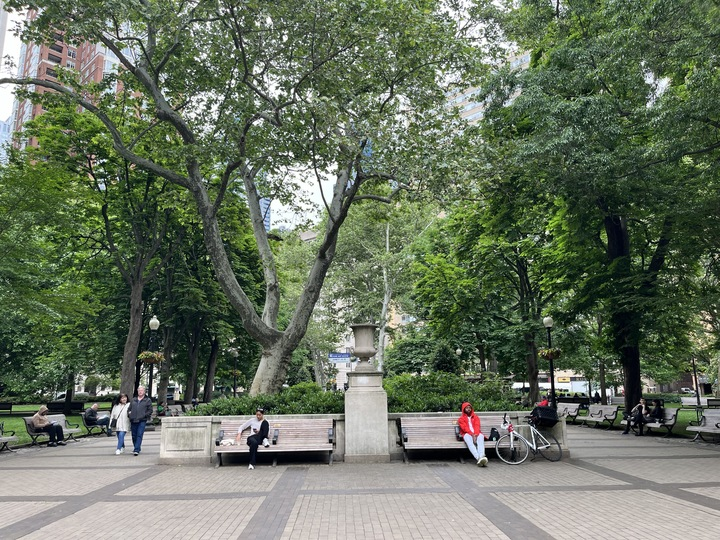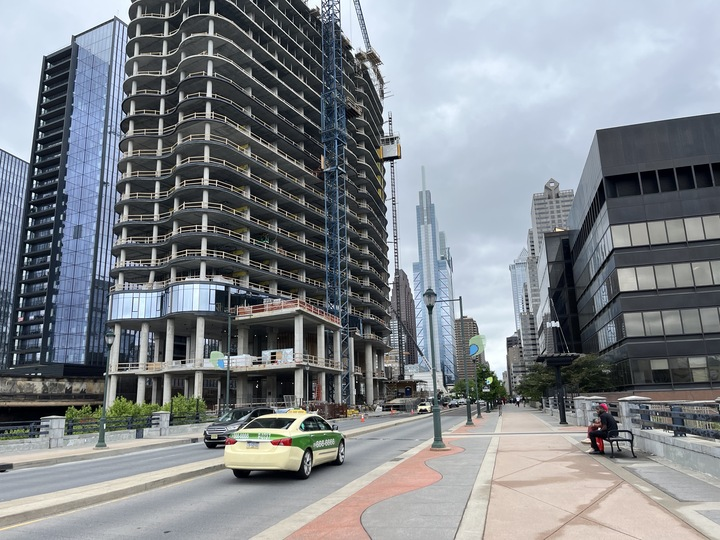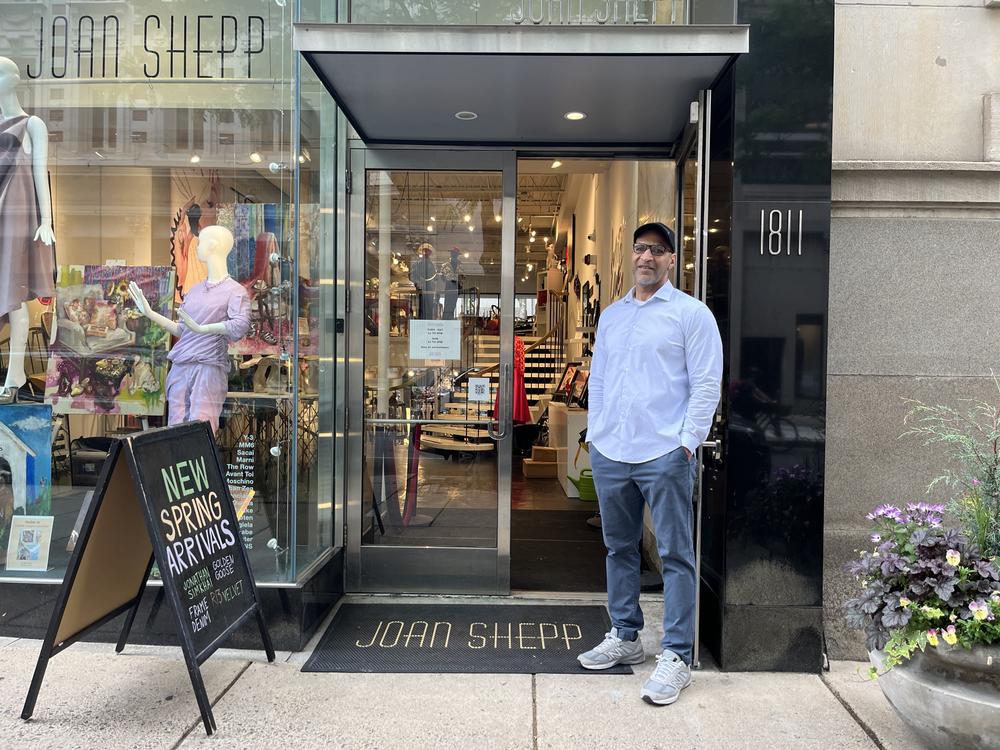Section Branding
Header Content
What does a downtown rebound look like? More residents and weekend visitors
Primary Content
PHILADELPHIA — Will America's downtowns decline due to hybrid work, or be revived by a boom in residents and visitors enjoying weeknight cocktails and Sunday brunch?
That's the question playing out in big cities across the U.S., more than two years after they began emerging from the pandemic's grasp.
Take Philadelphia.
Its downtown district uses sensors to count pedestrians at 23 different locations around the clock. That data can be used by retailers and developers to gauge foot traffic and likely business.
And it can also indicate something else: how well downtown is recovering.
For downtown Philly, those numbers are mixed, according to a new report. The area now draws 85% of the total pedestrian volumes that it did in 2019, while office workers are back at 72% of what they were in the pre-pandemic days.
But as a weekend destination, Philly's downtown has its mojo back, with weekend pedestrian numbers now at 100% of 2019 levels.
Other data nuggets indicate bright spots: The Philadelphia Ballet sold more tickets to The Nutcracker last winter than any time in its history. And there are more eateries with outdoor seating than there were before the pandemic – offering more places to take in the energy of the city.
"We feel optimistic," says Prema Katari Gupta, CEO of Philadelphia's Center City District. "One of the things that we posit ... is that it's time to stop talking about recovery" – and start talking about what's next.
In many cities, a strong recovery on evenings and weekends
The Downtown Recovery project at the University of Toronto has been tracking that same trend: Strong after-hours recovery amid still-diminished weekday populations in most big cities in the U.S. and Canada. Though their after-hours data was last measured in June 2023, the numbers then showed several cities – including Los Angeles, San Jose, Milwaukee, Houston, Tucson, and Charlotte – seeing after-hours numbers higher than they were pre-pandemic.
Karen Chapple is director of the School of Cities at the University of Toronto. She says part of what these strong after-hours numbers show is the pent-up demand from all the time we spent not doing fun things during the pandemic.
But that's starting to slow, and Chapple believes what we're seeing now is a gradual but real transformation of downtowns. Offices becoming apartments and condos. Old buildings being repurposed as space for arts, culture, and nonprofits.
"It's the hint of that kind of transformation of downtown," Chapple says. Though it's not happening everywhere, and small cities are quite different from big cities. "Big cities have been in some ways slower to change — a lot of their buildings are owned by pension funds or hedge funds, that they'd rather keep them empty for a while and wait it out. But other places, you're seeing proactive work to make sure that downtown is a good place to go, 24/7."
Tracy Hadden Loh, a fellow at the Brookings Institution, has been studying – and generating lessons from – downtowns' recovery, working with public and private sector leaders from New York, Seattle, Chicago, and Philadelphia.
Loh argues that for cities to thrive, they need to make these transformations easier, to allow and encourage their physical environment to adapt to a changing economy. "But it's not just about offices and it's not just about housing. We actually just need to make it easier to turn anything into anything else," she says.
Cities' downtown populations are still growing – and providing resilience
In addition to crunching the numbers on its downtown, Philadelphia's Center City District gathered data on 25 other American downtowns, looking for the patterns of post-pandemic recovery. They released those findings in October.
One particular statistic stood out: In 25 of those downtowns, the residential population was now larger than before the pandemic. That's largely the result of new housing, a continuation of a more than two-decades-long trend of revitalization in many U.S. downtowns. Those growing downtown populations run contrary to recent urban narratives focused on doom loops and crime.
And despite the emphasis on office workers, the study noted the largest group of people downtown on a typical day is visitors — that includes residents from other neighborhoods or suburbs going downtown for doctor appointments or lunch with a friend, as well as tourists from near and far.
The study of the 26 downtowns partly relied on cell phone data collected by the company Placer.ai, and found a relationship between the likelihood of someone's return to office and the distance of their commute. The shorter one's commute to the office, the more likely they were to go to it.
"Cities where the average commute time prior to the pandemic is shorter, are having stronger recoveries," says Loh. "The people most likely to return downtown for whatever reason, are the people for whom it's a very short trip. It's obviously the shortest when you live downtown."
That's the case in Philadelphia. Workers who live within two miles of downtown are back at work at rates around 90% – a much different picture than the 72% overall.
"It almost seems to me that the issue might not be employees don't want to be in the office. It might be we ought to think about commuting, and commuting patterns, and making that as frictionless as we possibly can," says Gupta.
(Still, even workers with short commutes appear unlikely to make the trip as often as they used to. "I don't think anywhere is going back to five days," says Loh.)
That connection between return to office and short commutes is good news for Philadelphia, which already has a downtown population of more than 200,000 — 1 in 8 city residents. Developers have been converting old office buildings into apartments for decades, and nearly 3,000 more downtown housing units were completed last year.
Those Center City residents insulated the city's downtown from some of the pandemic's hardest blows, by continuing to dine and shop downtown. Now they're a key part of the ongoing recovery.
"We see this growing downtown residential population really as future-proofing the office market, as well as all of the other great amenities downtown," says Gupta.
Downtowns still face big tests. Many offices have low occupancy on Mondays and Fridays. Retail has changed fundamentally, with people growing accustomed to ordering everything online. And many cities are grappling with crime, drug addiction, and homelessness.
One person who’s seen the ebb and flow in downtown Philadelphia is Dennis Miller, who works at a boutique clothing store along Chestnut Street in Center City.
"It’s not as much business as it used to be. It’s tough," he says. "We’re getting by, though."
He says some businesses on the block have closed, and more buildings are becoming residential.
And based on one metric, Miller thinks the 9 to 5 workers are returning.
The garage where he parks is in an office building, "and now it's packed. All the office people are coming back to downtown now."
Back at Rittenhouse Square, Susan West, 80, is chatting with a friend on a park bench. She has lived downtown for more than a decade, and she thinks the future for Philly's downtown is bright.
"I think it’s doing well and I hope it will continue," she says.
Gupta, the Center City District CEO, shares that optimistic outlook. It's an optimism grounded in how much has been learned over the last four years — years that have exposed the vulnerabilities city leaders can work to address, from improving access to childcare to easing commutes.
"Cities are never done. We can never declare return-to-office is what it is forever. All of these vectors are still moving, and we need to plan for the future," says Gupta. "There are absolutely challenges, but people still want to be here."




